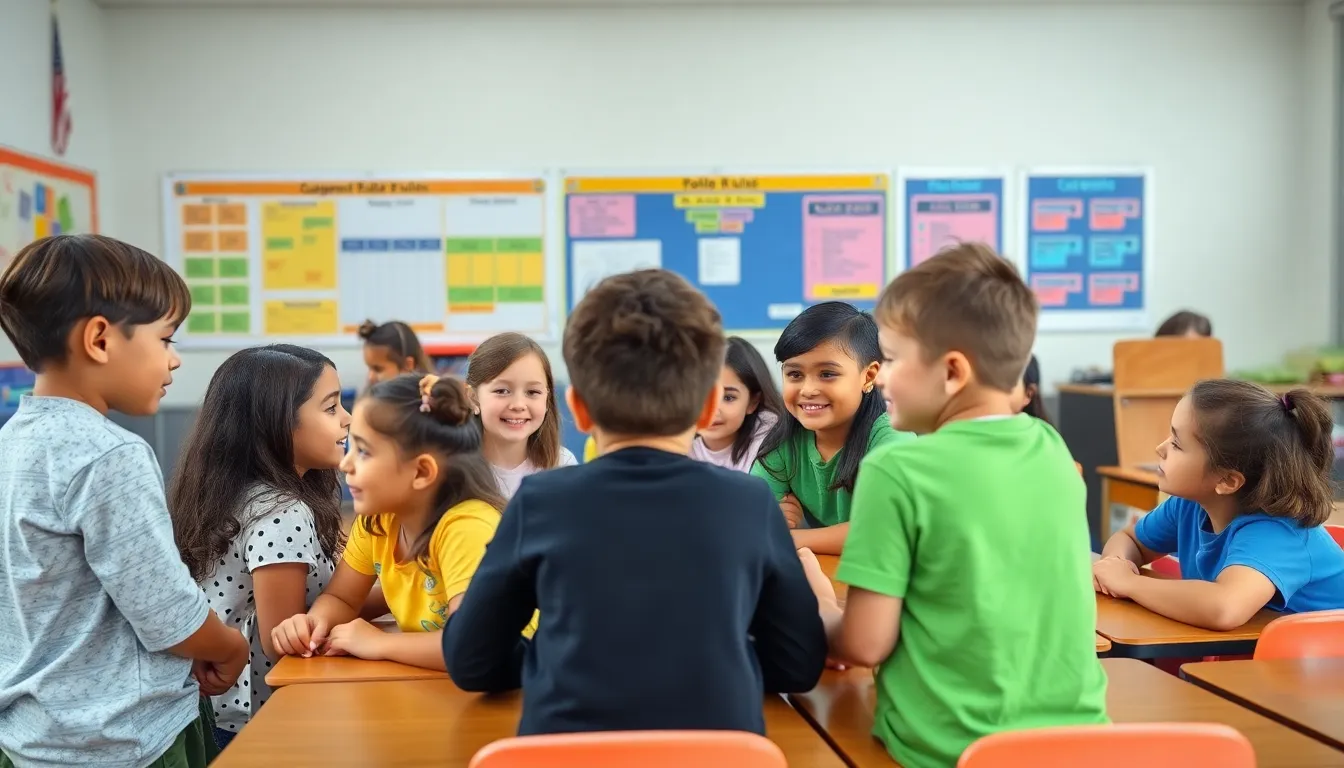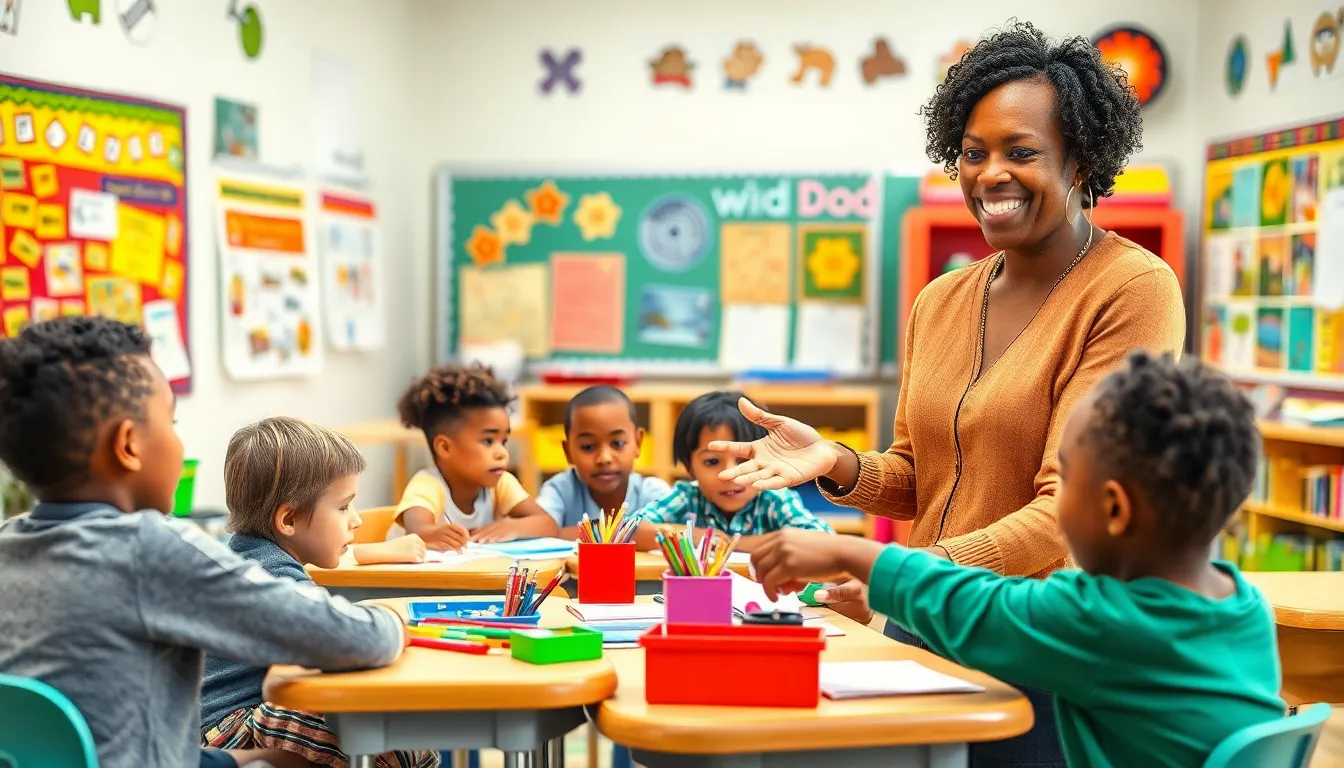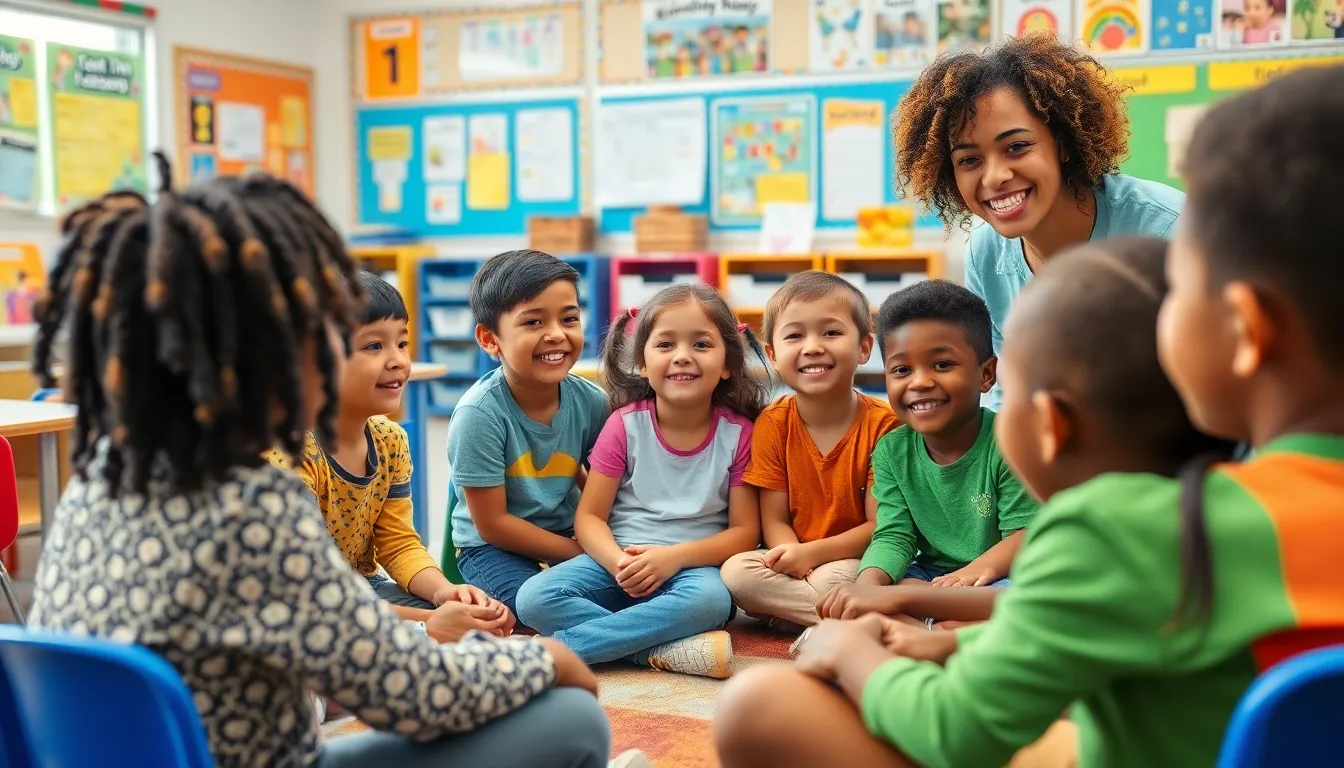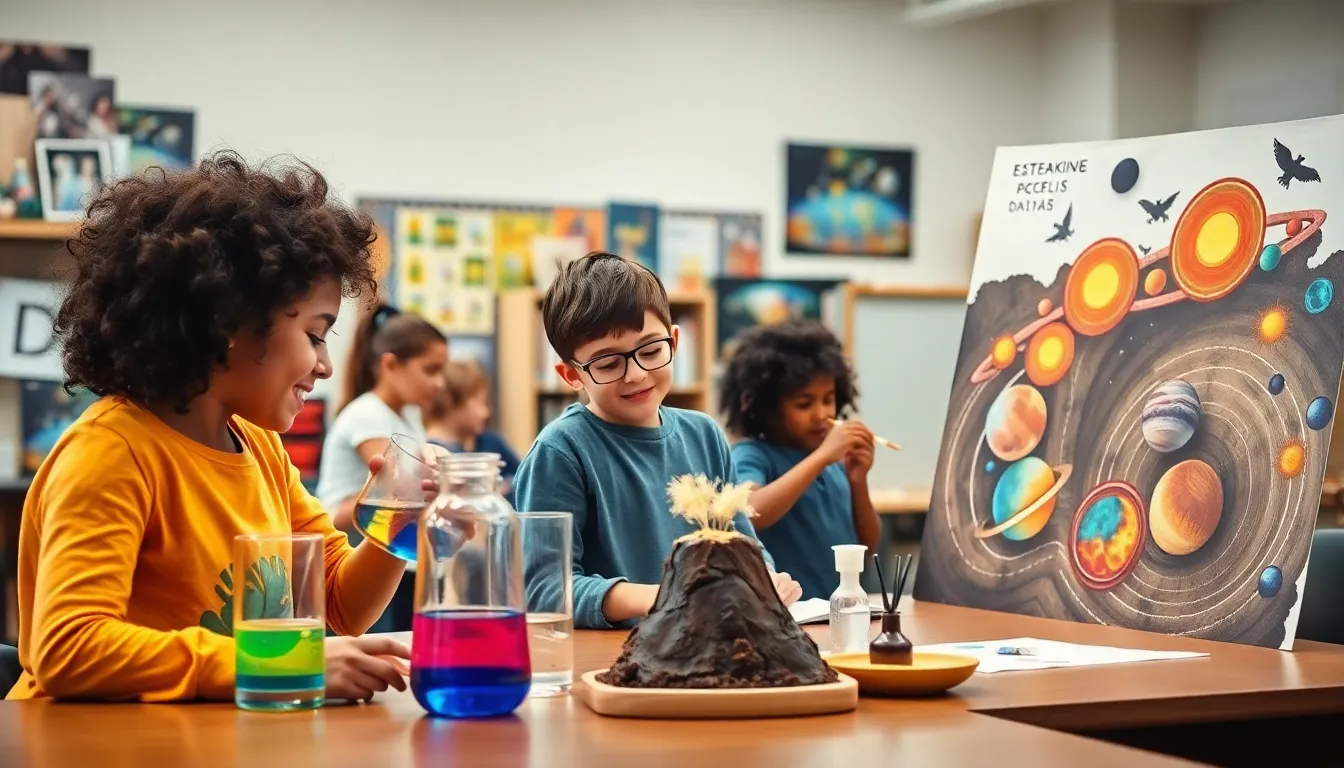Teaching elementary students can feel like juggling flaming torches while riding a unicycle—challenging yet rewarding. With young minds eager to learn and explore, the right strategies can turn a chaotic classroom into a vibrant learning environment. Whether it’s through hands-on activities, engaging storytelling, or collaborative projects, effective teaching methods can spark curiosity and foster a love for learning.
But let’s face it: not every day is a walk in the park. Some days might resemble a circus more than a classroom. That’s why having a toolkit of innovative strategies is essential for every elementary teacher. By embracing these techniques, educators can not only keep their students engaged but also make learning a fun adventure. Dive into the world of elementary teaching strategies and discover how to transform those classroom challenges into opportunities for growth and excitement.
Table of Contents
ToggleOverview of Elementary Teaching Strategies
Effective elementary teaching strategies engage students and enhance their learning experiences. Hands-on activities promote active participation, allowing students to explore concepts through real-world applications. These activities can include experiments, art projects, or interactive games that foster creativity and critical thinking.
Storytelling captivates students’ attention, connecting lessons with relatable narratives. Teachers can use stories to introduce new topics or reinforce learning, making the material more memorable. Integrating literature into lessons deepens comprehension and encourages a love for reading.
Collaborative projects encourage teamwork and communication skills. Students working in groups tackle challenges together, learning from each other while developing social skills. This approach promotes a sense of community in the classroom, where students feel supported and valued.
Differentiated instruction addresses individual learning styles and paces. Teachers can tailor lessons to meet diverse needs, ensuring every student has access to the curriculum. Utilization of various teaching methods, including visuals and manipulatives, supports various learners effectively.
Technology integration offers additional avenues for engagement and learning. Incorporating educational apps, interactive whiteboards, and online resources enriches the classroom experience. Students become more engaged when using technology that aligns with their interests and enhances their understanding.
Assessment for learning provides critical feedback and guides instructional practices. Continuous assessment strategies, including quizzes, discussions, and projects, help educators identify areas for improvement. Regular feedback empowers students to take ownership of their learning journey.
Overall, these strategies serve as essential tools for educators aiming to create dynamic and effective learning environments. By fostering engagement through varied approaches, teachers can transform challenges into valuable learning opportunities.
Effective Classroom Management Techniques

Effective classroom management contributes significantly to the learning experience. Implementing clear rules and procedures lays a solid foundation for student behavior and academic success.
Establishing Rules and Procedures
Establishing consistent rules fosters a sense of order. Clear expectations enable students to understand their responsibilities. Engaging students in the rule-making process creates ownership over classroom behavior. Review rules regularly to reinforce them, making it easier for students to remember and follow them. Utilize visual aids, like charts or posters, to display rules prominently. Utilizing these strategies helps maintain focus and minimizes disruptions.
Building a Positive Classroom Environment
Building a positive classroom environment encourages student engagement. Creating a welcoming atmosphere enhances students’ willingness to participate. Utilizing praise specifically for effort and achievement helps boost morale. Developing strong teacher-student relationships fosters trust, making students feel valued. Incorporating student interests into lessons creates relevance, increasing motivation. Encouraging collaboration among peers builds a sense of community, further improving the classroom dynamic. These techniques promote a supportive environment, contributing to overall student success.
Engaging Instructional Methods
Engaging instructional methods capture student interest and enhance learning. These techniques stimulate interaction in the classroom, making lessons memorable.
Active Learning Strategies
Active learning strategies involve students in the learning process. Techniques such as group discussions encourage collaboration and critical thinking. Problem-based learning challenges students to address real-world issues and develop problem-solving skills. Additionally, hands-on experiments allow students to explore concepts directly, reinforcing their understanding. Interactive technology tools provide instant feedback and keep students engaged, adapting to various learning styles. Each active strategy contributes to higher retention rates and fosters a deeper connection to the material.
Differentiated Instruction
Differentiated instruction addresses diverse learning needs effectively. Educators assess individual learning styles and adjust their teaching methods accordingly. Offering varied content types, such as videos and readings, ensures all students engage with the material. Grouping students by ability allows for tailored support, enhancing their comprehension. Flexible assignments accommodate different learning paces, allowing students to demonstrate their understanding in unique ways. Such strategies create an inclusive environment where every student can thrive academically.
Assessment and Feedback Techniques
Assessment plays a crucial role in shaping instructional practices and enhancing student learning. Effective assessments inform educators about student progress and areas needing attention.
Formative vs. Summative Assessment
Formative assessments occur during the learning process, allowing teachers to gather real-time data on student understanding. Common examples include quizzes, class discussions, and exit tickets. By continuously monitoring performance, educators can adjust their teaching strategies. Summative assessments evaluate student learning at the end of an instructional period. These include final exams and standardized tests, which measure the overall effectiveness of teaching. Both types serve distinct purposes and help in understanding student development.
Providing Constructive Feedback
Providing constructive feedback fosters student growth and encourages a growth mindset. Clear, specific comments highlight strengths and areas for improvement. For instance, rather than simply stating “good job,” educators can explain why a student’s work excels. Timeliness matters; feedback delivered promptly enhances relevance. Encouraging self-reflection by prompting students to think about their work fosters independence. Consistently offering feedback nurtures a supportive learning environment where students feel empowered to improve.
Technology Integration in Elementary Education
Technology integration plays a vital role in enhancing the educational experience for elementary students. It engages learners and facilitates deeper understanding through innovative tools and resources.
Utilizing Educational Apps and Tools
Educational apps and tools provide interactive experiences tailored to young students. Many apps support subjects like math and reading, offering practice through games and quizzes. Teachers can choose from numerous applications that promote creativity, such as digital art platforms and storytelling apps. Specific tools encourage collaboration, allowing students to work together on projects, even from different locations. Effectively, these resources create dynamic, engaging learning environments, making lessons more enjoyable and relevant.
Encouraging Digital Literacy
Promoting digital literacy empowers students to navigate technology confidently. Instruction often includes lessons on safe internet usage, fostering responsible online behavior. Furthermore, educators can incorporate activities that develop research skills, guiding students in finding credible sources. Incorporating technology in the classroom encourages critical thinking, helping students analyze information critically. Gradually, this digital literacy equips young learners with essential skills for future academic and personal success.
Embracing effective elementary teaching strategies is crucial for fostering a vibrant learning environment. By incorporating hands-on activities storytelling and collaborative projects educators can engage students and enhance their educational experiences.
Moreover integrating technology and employing differentiated instruction ensures that every child’s unique learning style is addressed. These approaches not only support academic growth but also nurture essential skills such as teamwork and critical thinking.
Ultimately a positive classroom atmosphere combined with innovative teaching techniques transforms challenges into opportunities for both educators and students. This commitment to engaging and inclusive education paves the way for lifelong learning and success.






